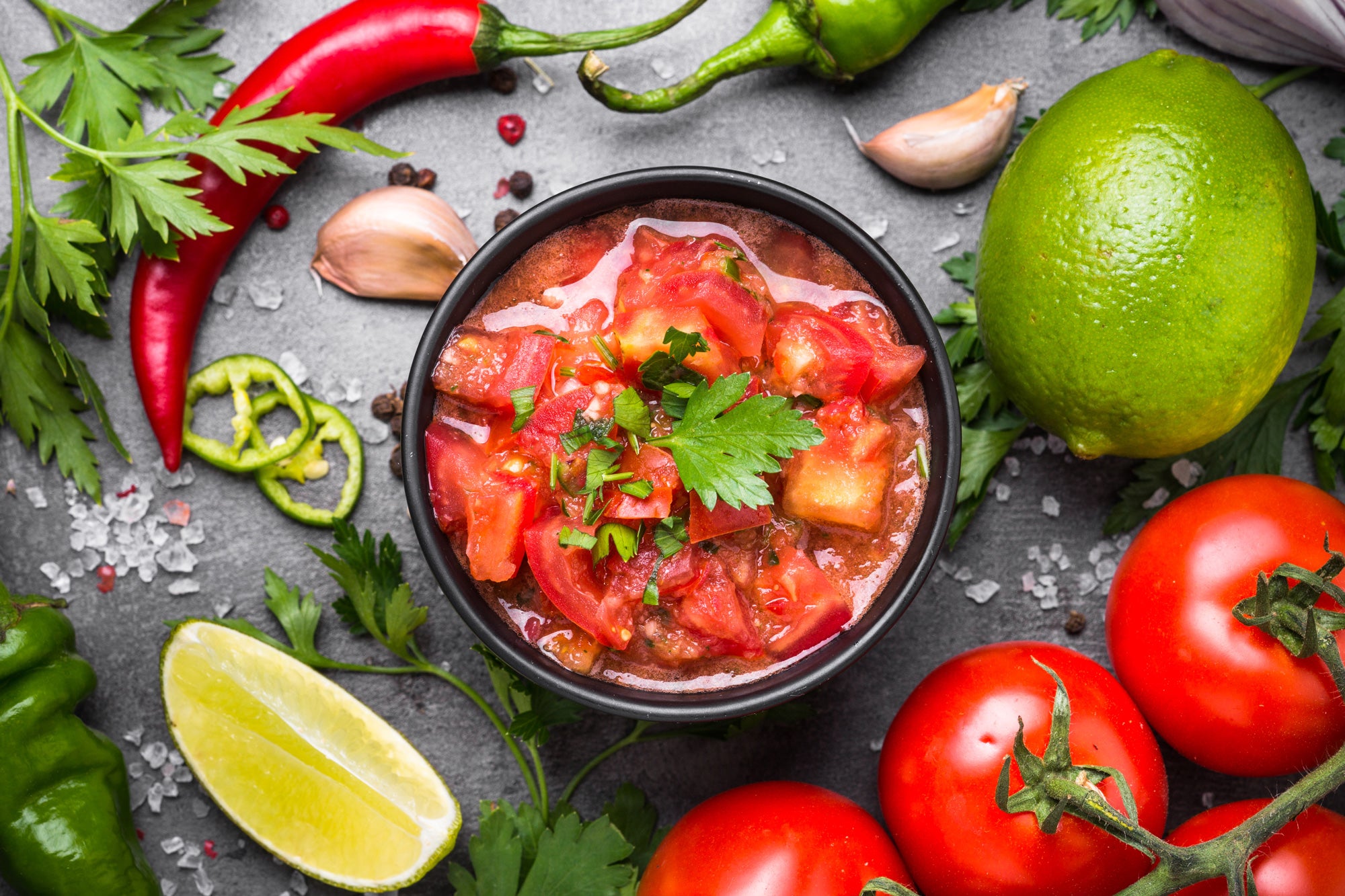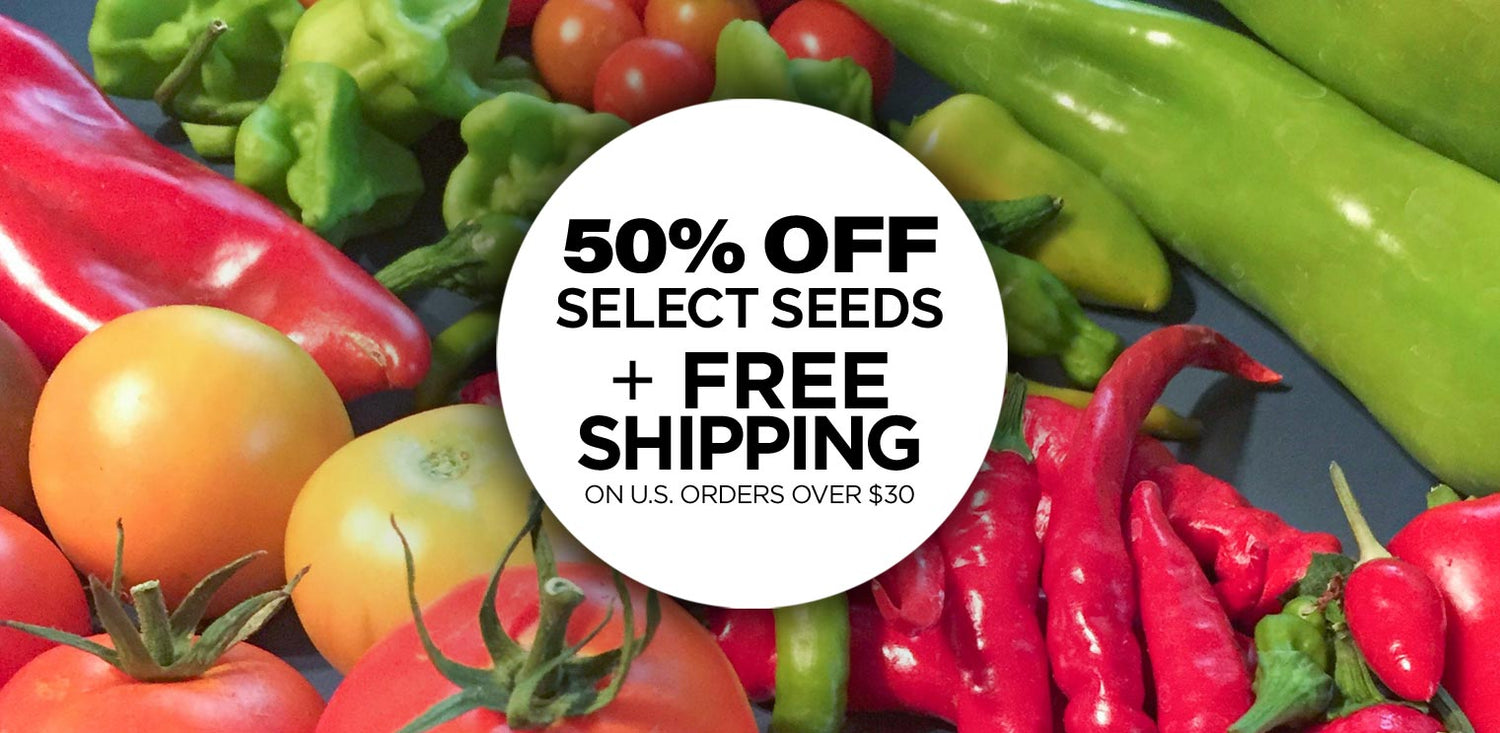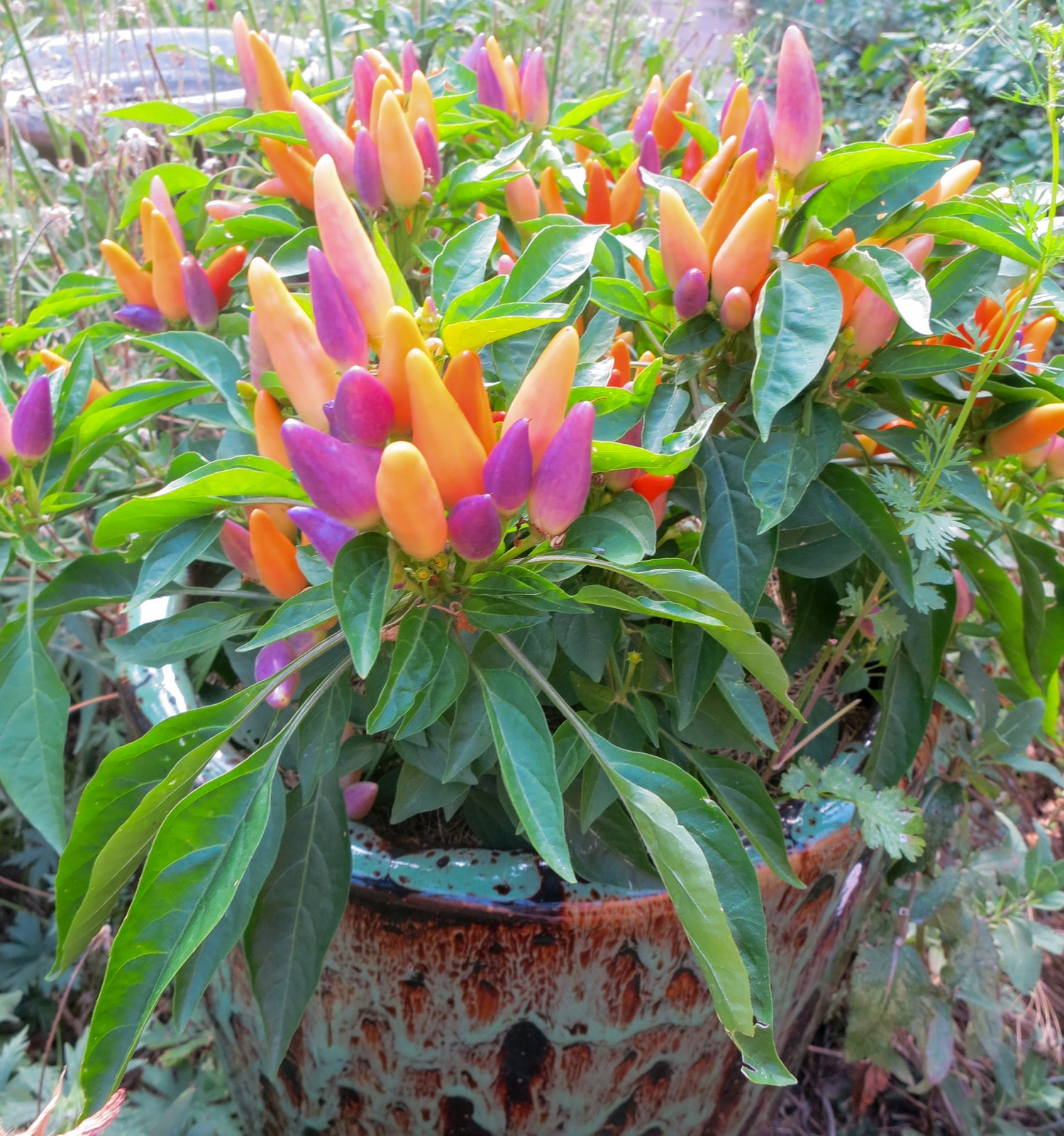
Pepper plant care is not all that complicated, you just have to know a few things:
-
Keep the seeds warm when germinating, they like to be between 80-90˚ F for fastest sprouting.
-
Movement: Once germinated, make sure pepper seedlings have good air circulation and movement. Yes, you can pet your pepper seedlings by brushing or "petting" the pepper plants with your hands. This is good for your indoor seedlings as it will stimulate them to grow thicker stems, and be stockier (less leggy or spindly). You can also put a small fan on them for a few hours a day for the same effect. This simulates the breezes they would normally get outdoors, and will promote overall good health. This also will help prevent damping off, a common ailment of seedlings that causes them to wither up and die.
-
Don't overwater! Pepper plants hate wet feet. Make sure to let the soil dry out in between watering. If the roots or soil is always soggy, your pepper plants may get yellow leaves which is a sign of overwatering.
-
Pinch off the First Blossoms:
This will encourage the plant to put more energy into growth, so you'll have more peppers later. Learn more about How to Prune Pepper Plants for Maximum Yield »
-
Harden Off Pepper Plants:
Gradually introduce your pepper plants to the outdoors, starting with a couple hours of partial shade, and working your way up to a full day of sun and a few nights outdoors before transplating. This will avoid transplant shock. We also recommend planting in the evening or early morning and watering in.
-
Plant in Full Sun when it's warmed up to 65˚ F at night consistently: Peppers don't like cold weather (with the exception of our cool-weather peppers from the mountains). Most chile pepper plants are stunted or even killed when temperatures drop below 50˚ F. And all peppers are frost sensitive. So start them indoors about 6 weeks before the last expected frost, and then wait to make sure that the outdoor temperatures have warmed up enough to take them outside. Also don't forget to Harden them off (see #4).
-
Don't Overfertilize with Nitrogen:
Peppers are light feeders, but can benefit from a regular feeding of a well-balanced, organic fertilizer or compost tea. Avoid high nitrogen fertilizers as they create lush foliage, but not a lot of peppers or blooms.
-
Pick Peppers at the Right Time:
When to pick peppers is dependent upon the variety, and many peppers can be picked in their immature green stages as well as when they mature to their fully ripe color. Typically, the riper the chile pepper, the more flavor. Learn more about When to Pick Peppers »
-
ENJOY THE HARVEST!
Enjoy chile peppers in some of our favorite Recipes »



















